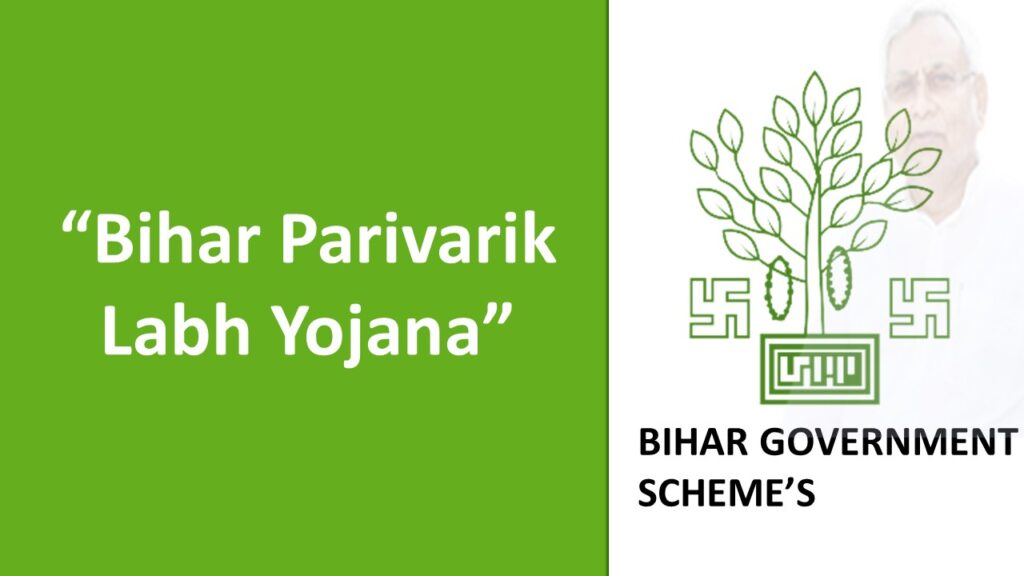Bihar Caste Census report have been released by the Government of Bihar, in which Most Backward classes constitutes of 36.01% of the population of Bihar where as general constitutes 15.52%. The data also unveiled that Other Backward Classes (OBCs) and Extremely Backward Classes (EBCs) make up an impressive 63 percent of the state’s entire population.
Additionally, 19.7 percent are identified as Scheduled Castes, and 1.7 percent as Scheduled Tribes in Bihar, as per a study presented by Development Commissioner Vivek Singh. In contrast, 15.5 percent of the populace is affiliated with the higher castes. The total population of the state surpasses 131 million. Notably, the study highlights the Yadav community, also known as the Bihar Jati Adharit Ganana, as the largest subgroup, constituting 14.27% of all OBC categories. The Overview of Bihar Caste Census have been mentioned below:
| Report | Bihar Cast Census Population |
| State Name | Bihar |
| Country | India |
| Report Released on | 2 October 2023, Monday |
| Report Released By | Nitish Kumar |
| Total Population of Bihar | 13 Cr + |
| Total Population of Bihar | 8.60% of India (2011 Census) |
| Population Growth | 25.42% (more then India’s Avg 17%) (2011 Census) |
| Sex Ratio | 918/1000 male (2011 Census) |
| Literacy | 61.8% (Lowest of all Indian states) |
| Population Density/Km2 | 1,106 (1st Position) |
Bihar Caste Census
Bihar Caste Census Report have been announced on October 2nd, 2023, by the Bihar Government which provides the caste-based census survey. According to the report, approximately 63% of Bihar’s population belongs to the Other Backward Classes (OBCs). Bihar’s total population exceeds 13 crores, with 27.13% comprising backward classes, extremely backward classes accounting for 36.01%, and the general category representing 15%.
| Total Castes | Population | Percent (%) |
| Backward classes | 3,54,63,936 | 27.1286% |
| Extremely Backward Class | 4,70,80,514 | 36.0148% |
| Scheduled Caste | 2,56,89,820 | 19.6518% |
| Scheduled Tribes | 21,99,361 | 1.6824% |
| General/Unreserved | 2,02,91,679 | 15.5224% |
| Total | 13,07,25,310 | 100% |
This article provides a comprehensive overview of the Bihar Caste Census Report 2023, including details on Caste Wise Population, Category Wise Population, Religious Demographics, and more.”
Bihar Caste Census 2023

The government has recently revealed that only 15% of the population falls under the general category, as opposed to the total figure. In contrast, 27.13% of the population is classified as belonging to the Backward class caste (OBCs). The category of extreme backwardness (EBCs) accounts for a substantial 36.1% of the population.
According to the census, Bihar’s current population stands at 13,07,25,310, with 3,54,63,936 (27%) falling under the OBC category and 4,70,80,514 (36%) under the EBC Category. It’s widely believed that the proportion of OBCs in Bihar, as well as in other regions, is considerably higher than the 27% reserved for government job quotas and academic institution admissions.
Bihar Caste Census Report Caste Wise Population
On January 7, the Bihar government initiated a two-phase caste survey. This comprehensive study covered all 38 districts of Bihar, documenting both the economic status of families and their respective castes. Despite ongoing legal deliberations in the Supreme Court regarding a Patna High Court ruling allowing the survey to proceed, the results of the caste-based survey have now been disclosed. The caste-wise data is outlined below:
| Castes in Bihar | Caste-wise population in Bihar |
| Yadav | 14.26% |
| Bhoomihar | 2.87% |
| Brahman | 3.65% |
| Koiri | 4.27% |
| Kurmi | 2.87% |
| Kayasth | 0.6% |
| Mochi, Chamar, Ravidas | 5.2% |
| Mushar | 3.08% |
| Rajput | 3.45% |
| Bania | 2.31% |
| Mallah | 2.6% |
Bhumihars constitute 2.86 percent of the population, whereas Brahmins account for 3.66 percent. Among the protected communities, Kushwahas make up 4.27 percent, while Kurmis represent 2.87 percent. Hindus comprise 81.99 percent of the state’s population, in contrast to Muslims, who constitute 17.70 percent.
Category Wise Bihar Caste Census Report 2023
The Category Wise Bihar Caste Census Report 2023 has been released by the Government of Bihar under the Chief Minister Shri Nitish Kumar and Development Commissioner Vivek Singh on 2nd of October 2023. The Category-wise Bihar Caste Census Report 2023 have been mentioned below in the table along with the population and population percentage:
| Category (वर्ग / श्रेणी) | Population | Population Percentage |
| Backward Class/पिछड़ा वर्ग | 35463936 | 27.12% |
| Other Backward Class/अत्यन्त पिछड़ा वर्ग | 47080514 | 36.0148% |
| Scheduled Caste/अनुुसूचित जाति | 25689820 | 19.6518% |
| Scheduled Tribes/अनुसूचित जनजाति | 2199361 | 1.68% |
| General/Unreserved/सामान्य / अनारक्षित | 20291679 | 15.5% |
Religion Wise Bihar Caste Census Report 2023
The Religion Wise Bihar Caste Census Report 2023 has been released by the Government of Bihar under the Chief Minister Shri Nitish Kumar Deputy CM Tejaswi Yadav and Development Commissioner Vivek Singh on 2nd of October 2023. The Religion Wise Bihar Caste Census Report 2023 have been mentioned below in the table along with their total population and population percentage:
| Religion (धर्म) | Total Population (आबादी) | Population Percentage |
| Hindu/हिंदू | 107192958 | 81.99% |
| Muslim/इस्लाम | 23149925 | 17.70% |
| Christian/ईसाई | 75,238 | 0.05% |
| Sikh/सिख | 14,753 | 0.011% |
| Buddhist/बौद्ध | 1,11,201 | 0.0851% |
| Jain/जैन | 12,523 | 0.0096% |
| Other Religions/अन्य धर्म | 1,66,566 | 0.1274% |
| No Religion/कोई धर्म नहीं | 2,146 | 0.0016% |
Bihar Caste Survey in Two Phase
On January 7, the Bihar government initiated a two-phase caste survey. This extensive study covered all 38 districts of Bihar, documenting both the economic status of families and their respective castes. Despite ongoing petitions in the Supreme Court challenging a Patna High Court ruling that allowed the survey to continue, the results of the caste-based survey have now been released to the public.
Initiative of the Government : Commenced on January 7, the two-phase caste survey aims to gather comprehensive socioeconomic data to facilitate the formulation of more effective government policies for marginalized communities.
Data Collection & its Scope : The survey includes information on both caste and economic status for a population of 12.70 crore spread across Bihar’s 38 districts.
Progress of the Survey: The initial phase, involving a house listing exercise, took place from January 7 to January 12. The paused second phase has resumed following the High Court’s decision and is slated for completion by mid-August.
Legal Battles on Bihar Caste Survey
Challenges to the Survey: Several petitions contesting the Bihar caste survey have been lodged in the Supreme Court, claiming that the state government is overstepping the powers of the Union government.
- The petitioners argue that the state does not possess the jurisdiction to carry out a census, as this falls exclusively under the purview of the Union government, in accordance with the Constitution and Census Act.
- Concerns have been raised about the intrusion into individuals’ privacy due to the sensitive nature of questions regarding religion, caste, and income during data collection.
- Some contend that the information gathered should not be disclosed to political parties, citing worries about privacy and potential misuse.
High Court Decision: On August 1, the Patna High Court granted permission for the state to continue the survey, deeming it legally sound, properly initiated, and in line with significant public interest.
Supreme Court Action: On August 14, the Supreme Court chose not to halt the survey, allowing the ongoing data collection process to proceed.
Patna High Court Uphold the Survey
The High Court acknowledged that the survey’s objective is to identify and uplift backward classes, Scheduled Castes, and Scheduled Tribes to provide them with equal opportunities.
- The Court determined that the survey is in accordance with the state’s jurisdiction for improved administration and policy formulation.
- It cited the Indra Sawhney ruling to validate the importance of caste identification in addressing social backwardness.

Caste Census in India
A caste census entails the systematic categorization of India’s population based on caste during the decennial Census exercise, which is a ten-year enumeration of the Indian populace.
Constitutional Provision
Our Constitution also supports the implementation of a caste census. Article 340 requires the establishment of a commission to examine the circumstances of socially and educationally backward classes and provide recommendations on actions that governments should take.
Socio-Economic and Caste Census (SECC)
The Socio-Economic and Caste Census (SECC) was first conducted in 1931. It aims to survey every Indian family, encompassing both rural and urban areas, to gather information about:
- Economic status: This data aids Central and State authorities in devising a range of indicators to measure deprivation. Different combinations of these indicators can be used by each authority to identify individuals facing economic hardship.
- Caste identity: SECC seeks to record the specific caste name of each individual. This information allows the government to reassess which caste groups face greater economic challenges and which are comparatively better off.
SECC has the potential to provide a comprehensive overview of inequalities at a broader societal level.
History of Caste Census in India
The first non-synchronous census in India took place in 1872 during Governor-General Lord Mayo at the time of British rule in India. The initial synchronous census under British rule occurred in 1881 under W.C Plowden, then Census Commissioner of India and Lord Ripon. Check the image below of detailed history of Caste Census in India:

Difference between Census and Socio-Economic Caste Census
The difference between Census and Socio-Economic Caste Census have been mentioned below in the table:
| Difference | Census | Socio Economic Caste Census (SECC) |
| Constitutional Basis | Census has been listed in the Union List (entry 69) of Seventh Schedule in Constitution of India | Article 340 mandates the establishment of a commission to examine the circumstances of socially and educationally backward classes and provide recommendations on actions that should be taken by governments. |
| Legal Basis | Conducted under the Census Act, 1948 | No specific Act |
| Duration | Conducted every 10 years (e.g., 2011) | Last SECC conducted in 2011 |
| Historical Backing | First systematic census in India was conducted in 1881, evolving since 1885 to 1872 in different parts | First SECC conducted on 1931 |
Caste Census UPSC
A caste census essentially involves tallying individuals from various castes within a designated area. Through this two-phase initiative, the Bihar government aims to gather data on individuals belonging to SC, ST, and OBC communities, as well as their economic status and other pertinent details. This endeavor is known as ‘Jaati Aadharit Ganana’. It will encompass individuals from every religion and caste.The caste-based census and its data will empower the government to focus on the development of different segments of society, particularly those who are marginalized.
Although, a caste census might seem contradictory to the vision of a casteless society, it could potentially be a tool for addressing societal inequalities. As each day passes and societal consciousness grows, there is an increasing sense of urgency to eradicate the caste system.
“Dr. BR Ambedkar asserted that for India to achieve a position of honor among nations, caste must be eradicated first.”
The 21st century presents an opportune moment to grapple with India’s caste issue. Failing to do so could have significant repercussions, not only in sociological terms but also politically and economically, potentially causing us to lag behind in development indices.
FAQs
What is a Census?
A census is the systematic process of gathering, recording, and analyzing demographic information about the individuals within a specific population.
What is caste census?
A caste census refers to the incorporation of caste-specific categorization within India’s decennial population count, known as the Census exercise.
When was first census conduced?
The origin of the Census in India traces back to the colonial initiative of 1881.







